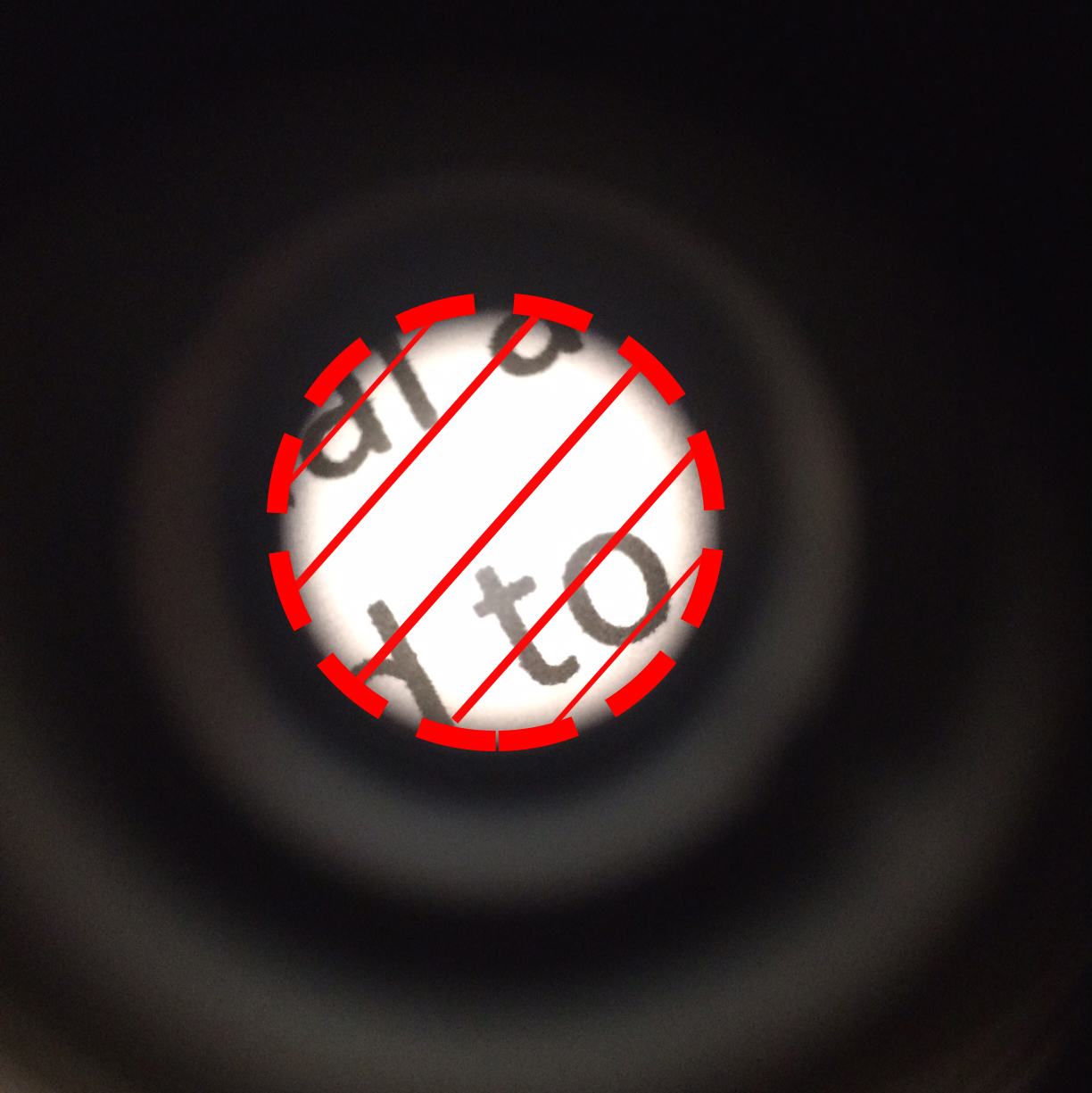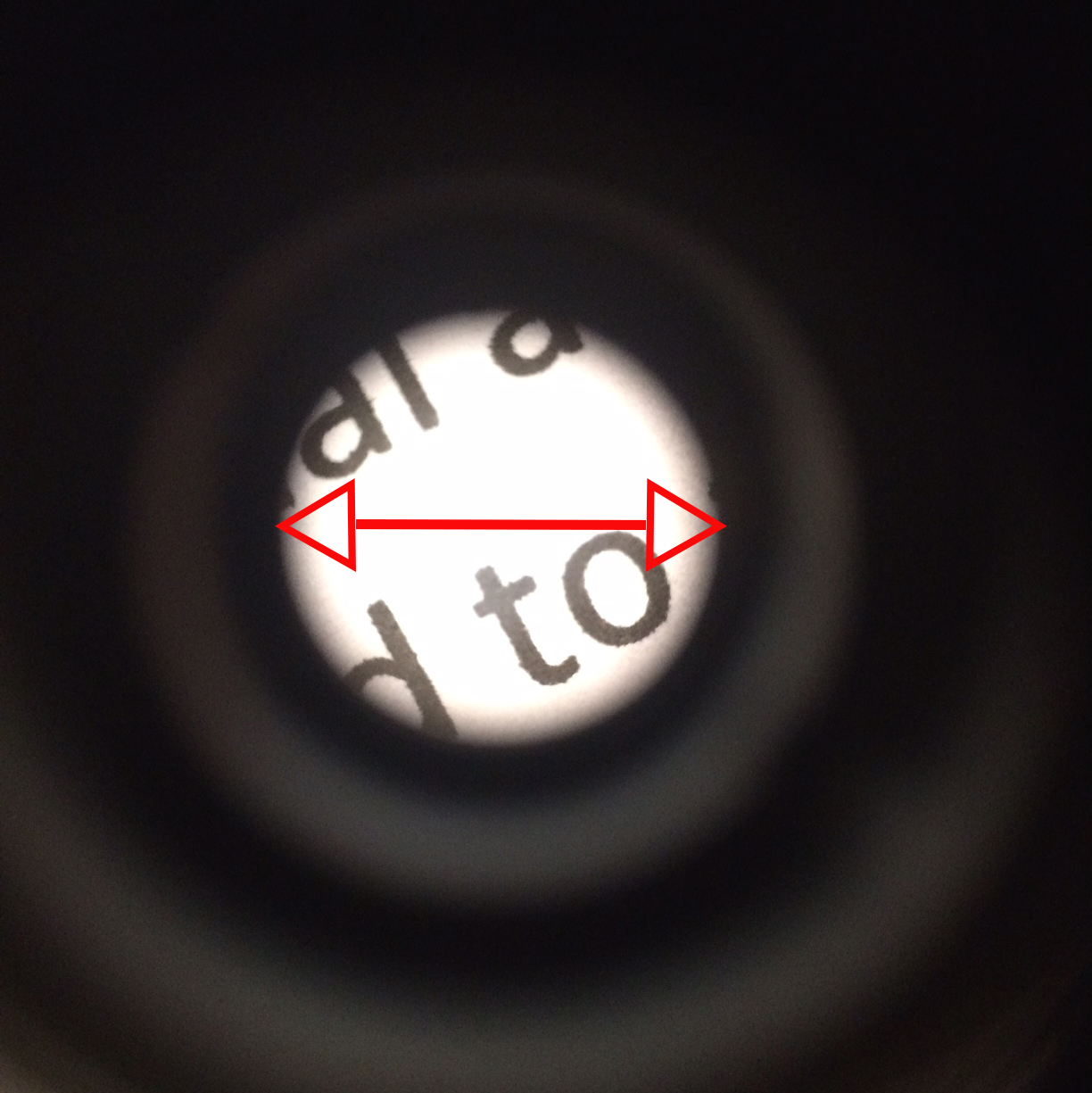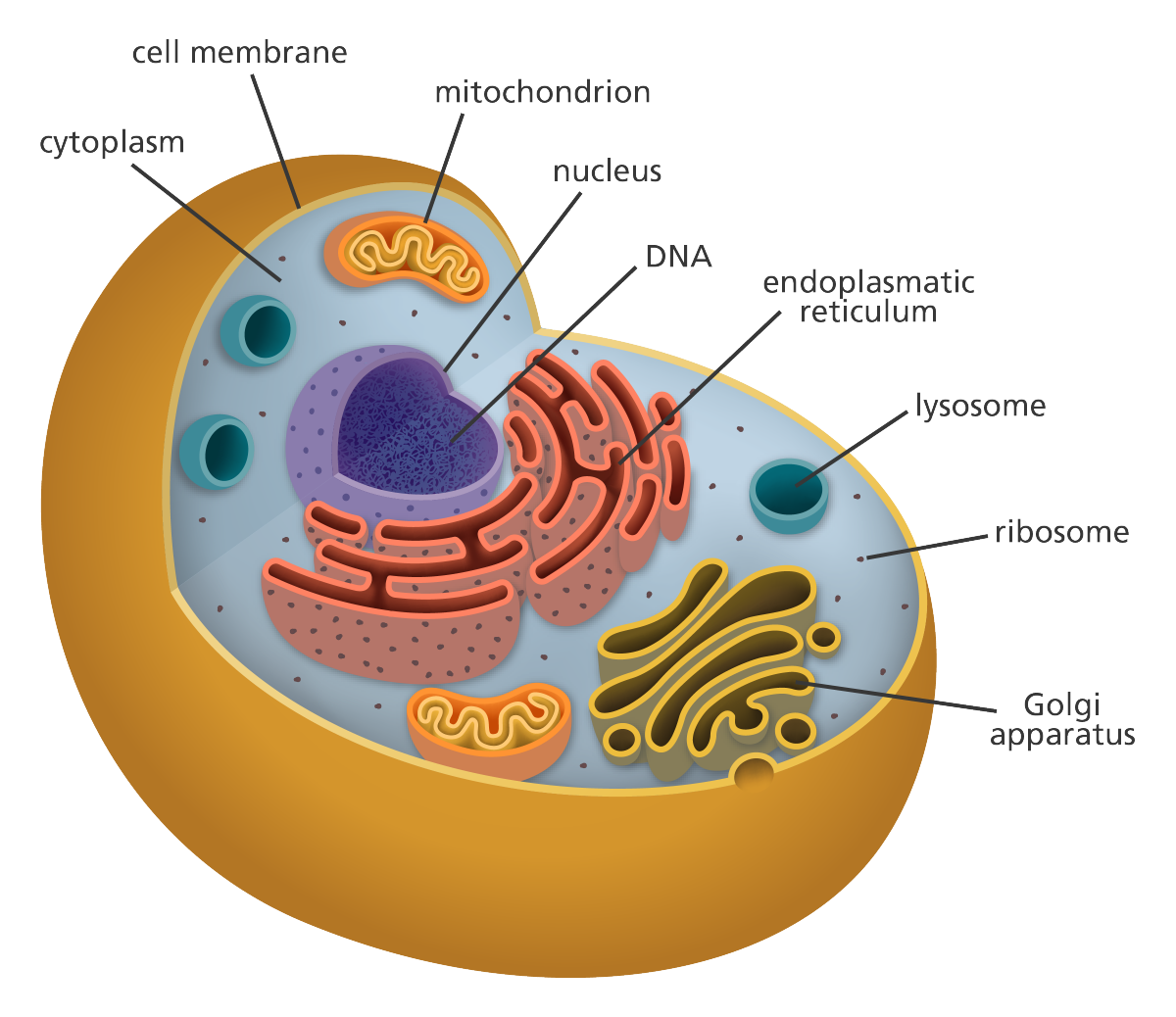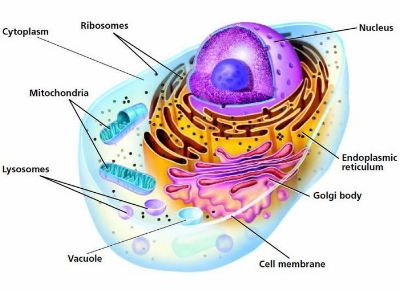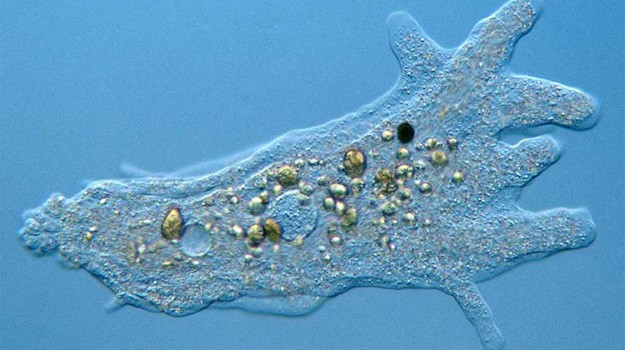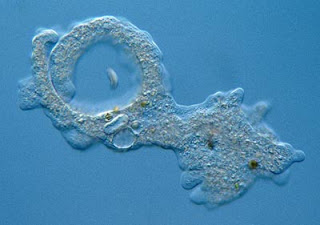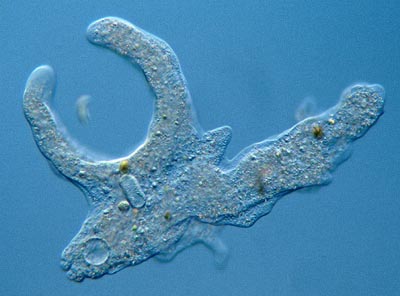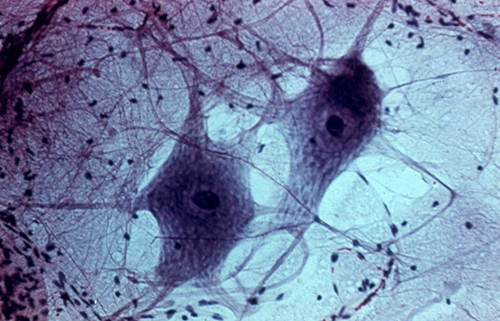What is considered a Living Thing?
Six Characteristics ALL Living Things must have:
Made of cells
Need energy
Grow and develop
Respond to the environment
Reproduce
Adaptations for their environment
1) All living things have Cells. The cell is the basic unit of life.
All organisms are made up of at least 1 cell
Organisms can be made up of multiple cells (humans are made up of trillions of cells, yes trillions)
Generally, most cells fall into a small range 10-50 micrometers across (hair on average is about 100 micrometers across)
2) All living things need Energy!
Energy is needed to make things move, to build structures, to stay warm
Organisms get energy from the environment:
Plants (Producers) = Sun
Animals (Consumers) = Surrounding environment
Nutrients:
Substances that provide the energy (fat, protein, carbohydrates) and materials (minerals, vitamins) that organisms need to grow, develop, and reproduce
Metabolism:
The sum of all the different processes that happen inside an organism .
Energy is converted inside the cell for us to use, the energy amount has to be balanced:
Too much energy conversion = obesity
Too little energy conversion = malnutrition
WHITE BLOOD CELL DOING ITS THING!
3) All living things Respond to the Environment!
Stimulus:
Anything that causes a response in an organism
Response:
An organism’s reaction to a stimulus
4) Grow and Develop
Larger structure and change of structure (hair, muscle, bone structure)
Changing of body shape
5) Reproduce
All living things come from other living things
Reproduction does not mean an individual organism will survive, but the survival of the species
6) Adapt to their Environment
Adaptation:
Physical or behavioural characteristic of a species that increases the species’ chances of survival in a particular environment
Structure And Function
All Organisms need to do certain things to stay alive
Ex. Predators hunt for food, plants exchange gases, coral reefs absorb nutrients, etc.
As such, through evolution organisms develop different ways of doing these tasks
Structure:
Parts of an organism that perform specific tasks to survive
Function:
Purpose or task
Different Structures for Similar Functions
But different plants and animals have developed different structures for doing similar functions
Example: Using light to respond to the environment
Human – Camera eye
Insects – Compound eye
Amoeba – Phototaxis
The Microscope
Without a microscope our eyesight can only see clear, defined images of things that are 0.1 mm or larger
This means we cannot see any microorganisms that could make us sick!
This created a few myths in the past, particularly that germs do not exist because we can not see them!
RENAISSANCE MAN... GREAT HAIR TOO.
Micro-organisms were first discovered by Anton Van Leeuwenhoek.
SARS ON TOP OF EPITHELIAL
Anton used lenses to look at pond water he was one of the first to essentially find microbial life
Anton also used lenses to look at blood samples
He made an object appear larger than it’s actual size, and termed it magnified.
Today’s Microscopes:
2 General Types Used in Science Research
Compound Light Microscope (up to 2000 X magnification)
Electron Microscope (up to 2, 000, 000 X magnification)
Total Magnification :
Two lenses provide the total magnification. The ocular lens (usually 10x) multiplied by the magnification lens (4x, 10x, or 40x) results in the total magnification.
Field of View :
The entire area that can be seen when you look through a microscope
Diameter of Field:
The diameter of the field of view, it's the distance between one side of the lens to another. Diameter of field depends on magnification!!
Lets say at 10x magnification (AKA ocular lens only) your diameter of field is 20mm:
At Low power the objective lens is 4x magnification. So the diameter of field is 4 times smaller :
Diameter of Field / Objective lens magnification
20mm / 4 = 5mm
At Medium power the objective lens is 10x magnification. So the diameter of field is 10 times smaller :
Diameter of Field / Objective lens magnification
20mm / 10 = 2mm
At High power the objective lens is 40x magnification. So the diameter of field is 40 times smaller :
Diameter of Field / Objective lens magnification
20mm / 40 = 0.5mm
The Cell Is the Basic Unit of Life
All living things are composed of one or more cells
Cells are the basic units of structure & function in all organisms
Cells with similar structure & function are organized into tissues
Tissues work together for a common purpose to form organs
A group of organs that work together for a common purpose to keep you alive is called an organ system!
Cells < tissue < organ < organ system < organism
Cell Function
Cells need a constant supply of materials like oxygen, carbon dioxide (plant cells), water, nutrients
Cells needs to get rid of waste products (oxygen is a waste product in plant cells!)
Cells must control materials going into and out of the cell. Nutrients go into the cell, wastes come out.
Looking at Cells
There are certain factors that can affect what you are able to see in the amount of detail when looking inside a microscope:
Type of microscope
Power of the lens
Quality of the prepared slides
Cell Structures
A HUMAN CELL
Organelles:
Inside the cell, there are structures that have particular functions to keep the cell alive
Some organelles may be found in both plants and animals
Some organelles are found in only plant cells or only in animal cells
Why the variety of organelles? Depends on the purpose of the cell (Ex. Muscle cell vs. leaf cell)
Organelles
Nucleus:
The command center of the cell
Controls the cells activities
Holds the DNA of the cell
Directs all cellular activities such as movement, growth, and other life functions
In both plants and animal cells
Mitochondria:
The powerhouse of the cell
Chemical reactions occur that convert energy into useable forms
In both plant cells & animal cells
Ribosome:
The factories of the cell
Use RNA to build and create protiens and enzymes for use in our body
Cell membrane:
Controllable gateway in and out of the cell
Surrounds & protects the contents of the cell
Looks like a thick line around the cell
Lets needed materials in & waste materials out
In both plant cells & animal cells
It has the ability to expand and contract based on how much water is in the cell
Vacuoles:
The storage room of the cell
Membrane bound sac acting as a storage space for excess food & wastes
Clear, liquid filled space in cytoplasm
Plants generally have 1 big vacuole, animal cells generally have many small vacuoles
Cytoplasm:
The Kitchen of the cell
Covers everything inside the cell except the nucleus
Contains nutrients required by the cell
Distributes material to different parts of the cell
Found in both plant cells & animal cells
Lysosome:
The trash can of the cell
break down worn out parts of the cell
depending on the type of cell are used to kill bacteria or viruses
STRUCTURES ONLY FOUND IN PLANT CELLS
PLANT CELL
Cell Wall:
The frame of the cell, it is surrounds the cell membrane.
Found in Plant cells NOT in animal cells
A rigid frame-like covering that surrounds the cell membrane it does NOT expand or contract (unlike the cell membrane)
Provides structural support for the cell
Chloroplasts:
The solar panels of the cell
Structures in which photosynthesis takes place
Greenish structures found only in plant cells
Organisms Can Be Single-Celled or Multi-celled
Unicellular:
Made of just one cell
Micro-organisms :
Very small, generally unicellular organisms that can be seen only through a microscope
Unicellular organisms :developed specialized structures to perform functions such as eating, moving, reproducing, excreting and reacting to stimuli. (Bacteria, amoebas, paramecium)
Amoeba
Lives in water, Moves around using pseudopodia
Foot-like projections. ‘False feet’
A pseudopod is extended and the cytoplasm fills it. Moves very slow
Also uses the pseudopodia to eat by surrounding their food (algae, bacteria, plant cells) to create a vacuole
Paramecium
Moves very fast in the fresh water, covered in cilia to move
Hair like structures that move back & forth
Cilia also used to capture food (algae) by channeling food to an oral groove
Forms a food vacuole to be digested
ROTIFERS ARE THE SMALLEST KNOWN MULTICELLULAR ORGANISM
Multicellular:
Made of 2 or more cells
Multi-cellular organisms: rely on many very specialized cells to perform functions such as to eat, to move, to reproduce, all the cells interact with one another.
Example. Multicellular organisms that eat use cells for digestion, cells for absorption, cells for carrying nutrients throughout body, cells for the muscle to move.
Cells in Multicellular Organisms
Specialized cells:
Cells that have specific structures that help them to perform particular functions
Specialization means that the cells of a multicellular organism must work together to support their own lives, as well as the life of the whole individual.
For example:
Red blood cells are small, pliable cells that have no nucleus and are specialized for carrying oxygen to all the cells of the body.
Do NOT reproduce the same way as other cells
How do RBC’s reproduce?
Bones in the skeletal system have marrow which produces red blood cells.
Animal Tissue
All cells in humans and animals can be categorized in four different tissue type
Each organ is made up of different combinations of these 4 types of tissues:
1. Nervous tissue (Sensory)
Nerves
Sensory cells
2. Muscle tissue (Movement)
Smooth muscle
Skeletal muscle
Cardiac muscle
3. Connective tissue (Support and connect)
Blood
Fat
Tendon
Bone
Cartilage
4. Epithelial tissue (blanket)
Skin
Covers organs as well
Lining of organs
Tissue in Plants
Plant cells are also organized into tissues, but plants have 3 tissue types:
1) Ground tissues - (make sugar)
Cells inside a plant containing chlorophyll that manufacture sugars
Cells that store glucose, and resins
2) Epidermis Tissues - (Protect plant)
Cells that line outside of a plant for water proofing (found in leaves)
Cells that form outside layer of plants (hairs, thorns, stomata)
ELECTRON MICROSCOPE OF XYLEM TISSUE
3) Vascular tissues - (network for water and sugar)
Xylem tissue (water tubes) - Layer(s) of xylem create tree rings on the inside of plants, this tissue allows water to travel from the roots into all parts of a plant.
Phloem tissue (sugar tubes) - A layer of phloem tissue surrounds a plant just underneath the bark, it connects leaves to the rest of a plant, it transports sugar (glucose) to all parts of a plant.
IN TIMES OF FAMINE THE PHLOEM LAYER OF TREES WAS USED FOR SUSTENANCE
Organs in Plants
Tissues are organized into the 3 organs that make up plants:
Leaves
Roots
Stems
LOOK AT THEM BIG OL’ LIPS - STOMATA ON THE BOTTOM SIDE OF A LEAF ALLOW FOR GAS EXCHANGE AND TRANSPIRATION
Leaves (A plant’s food producing organs)
Where photosynthesis takes place
Contains chloroplasts which are thin, allowing a large amount of light in
Contains stomata which are tiny opening that allow air to enter the leaf
Spaces between leaf cells allow the air to flow and the guard cells open and close the stomata
Transpiration:
The loss of water in a plant which happens through the release of water vapour from a plant
Not a problem unless the plant loses too much water and doesn’t replace it by the roots
Movement of water throughout the plant happens because of the differences in pressure - high pressure in the root hairs to lower pressure in the leaves
Root system (A PLANT’S NUTRIENT COLLECTING ORGAN)
If the soil water concentration is greater than root water concentration, water will flow inside of the root hairs, this is done by osmosis!
Water travels from cell to cell until it reaches the xylem tissue (think tree rings)
The xylem tissue move the water up the plant by a build up of high water pressure (NOT OSMOSIS!) forcing water up the xylem tissues into stems and leafs
How Substances Move Into & Out of Cells
DIFFUSION OF PARTICLES MOVE FROM AN AREA OF HIGH CONCENTRATION TO LOW
Diffusion:
Movement of particles of a substance from an area of higher concentration to an area of lower concentration
It’s a balancing out process of the particles where no energy required
Osmosis:
Special kind of diffusion, it is the diffusion of water particles through a selectively permeable membrane
Water particles are small enough to diffuse through the cell membrane with ease, depending on the concentration gradient (L to H)
Osmosis is vital to the survival and health of cells
WATER MOVES FROM AN AREA OF LOW CONCENTRATION TO HIGH
Selectively permeable:
A membrane with very small openings that allow particles of some substances, but not others, to pass through. (Based on size)
A permeable membrane allows all materials to go in & out
An impermeable membrane does not allow anything in or out.
Diffusion & the Cell Membrane
Particles of many substances move in & out of cells by diffusion
However, the cell membrane acts like a filter with its tiny openings, allowing some particles to go through if they are small enough (I.e. semi-permeable!)
Three Types of Water Solutions
Isotonic solution:
Equal concentration of solutes on each side of semi-permeable membrane
Hypertonic Solution:
Solution with high concentration of solutes (very concentrated)
Water leaves the cell, and it shrivels
Potentially fatal to plant
Hypotonic Solution:
Solution with the lower concentration of solutes
Water enters the cell, and the cell swells
Potentially fatal to plant
Cells need an optimal amount of water concentration. There needs to be a balance inside & outside of the cell. If too much water enters and/or leaves the cell, the cell may die

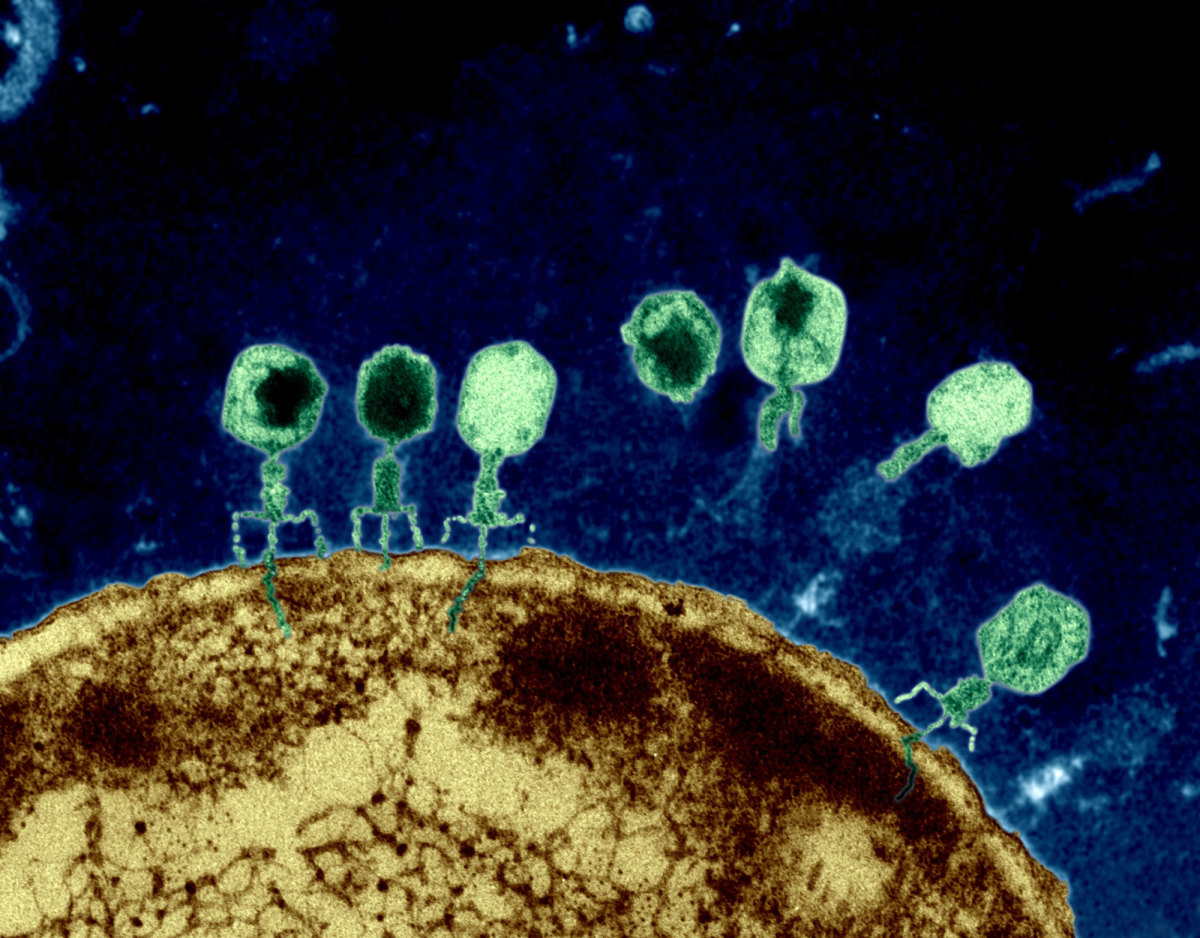

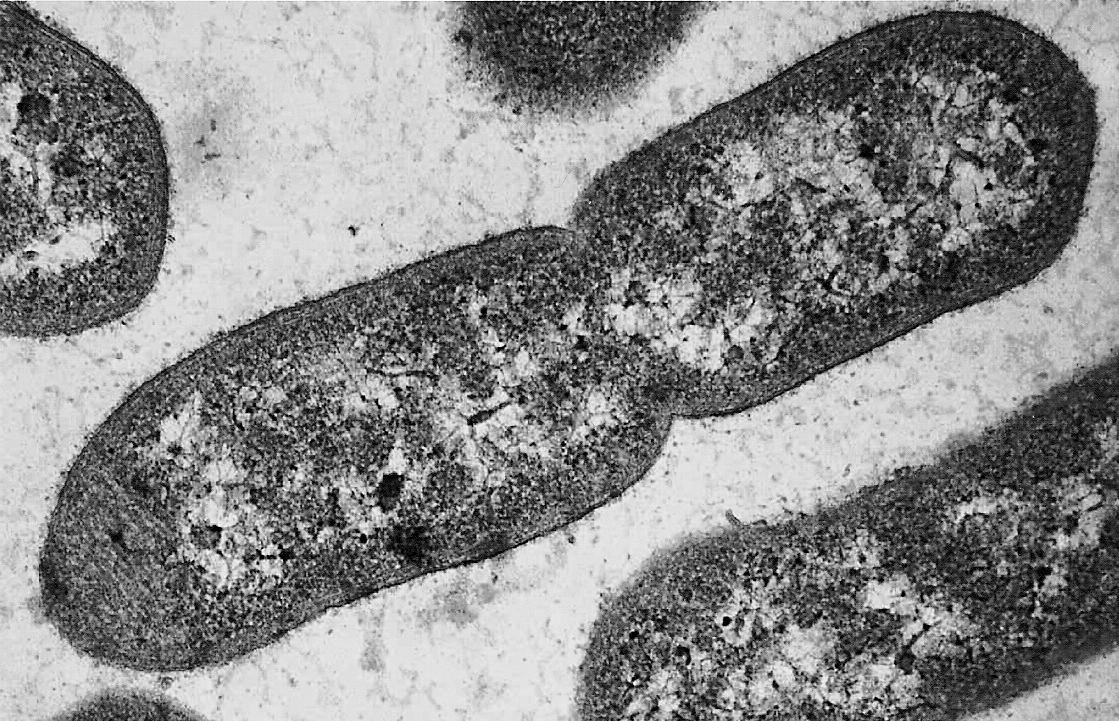
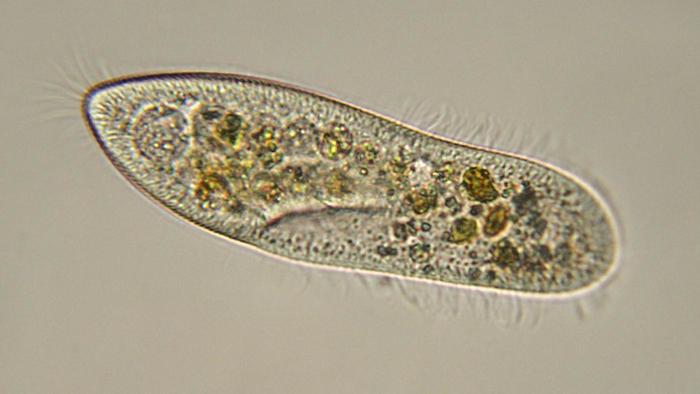



![image[1].jpeg](https://images.squarespace-cdn.com/content/v1/542ce587e4b003527579fd2f/1511202148874-BPJRS863LMHD94ZCHYJ4/image%5B1%5D.jpeg)

